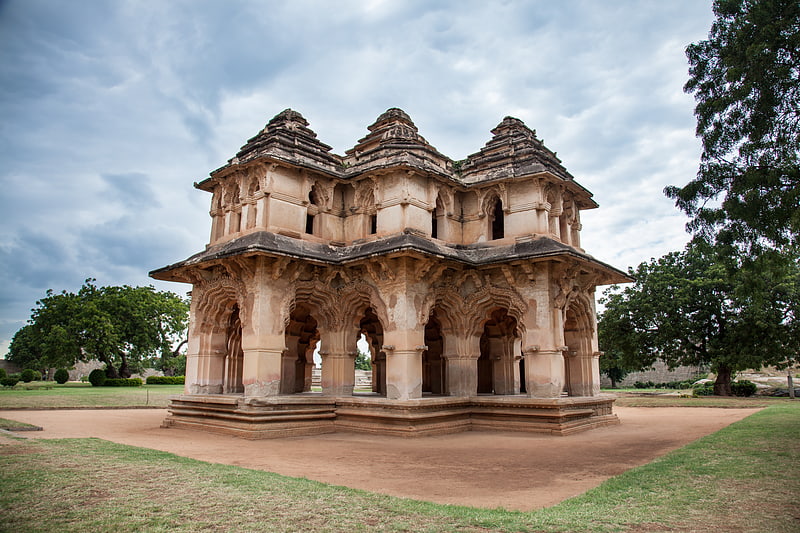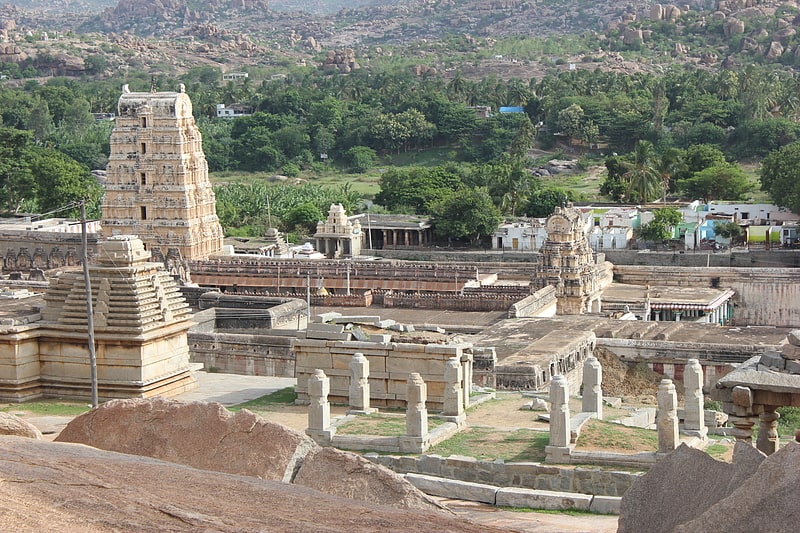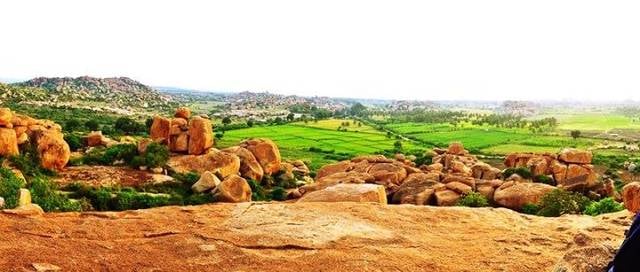Discover 5 hidden attractions, cool sights, and unusual things to do in Hampi (India). Don't miss out on these must-see attractions: Virupaksha Temple, Lotus Mahal, and Pampa Sarovar. Also, be sure to include Vijayanagara in your itinerary.
Below, you can find the list of the most amazing places you should visit in Hampi (Karnataka).
Table of Contents
Virupaksha Temple

Hindu temple in Hampi, India. Virupaksha Temple is located in Hampi in the Ballari district of Karnataka, India. It is part of the Group of Monuments at Hampi, designated as a UNESCO World Heritage Site. The temple is dedicated to Lord Virupaksha, a form of Shiva. The temple was built by Lakkan Dandesha, a nayaka under the ruler Deva Raya II also known as Prauda Deva Raya of the Vijayanagara Empire.
Hampi, capital of the Vijayanagara empire, sits on the banks of the Tungabhadra River (Pampa hole/Pampa river). Virupaksha Temple is the main center of pilgrimage (ತೀರ್ಥಯಾತ್ರೆ)at Hampi, and had been considered the most sacred sanctuary over the centuries. It is intact among the surrounding ruins and is still used in worship. The temple is dedicated to Lord Shiva, known here as Virupaksha/Pampa pathi, as the consort of the local goddess Pampadevi who is associated with the Tungabhadra River. There is also a Virupakshini Amma temple (mother goddess) in a village called Nalagamapalle, Chittoor district, Andhra Pradesh, approximately 100 km from Tirupati.[1]
Address: Hampi Bazaar St, Hampi
Lotus Mahal

Lotus Mahal or Chitrangini Mahal is an important secular structure in Hampi, India. The Lotus Mahal is an example of Vijayanagara style of architecture and is a two storied structure built in Rubble masonry and finely plastered. The structure was used as residue place for royal family of the Vijayanagara Empire.[2]
Pampa Sarovar

Also known as: पम्पा सरोवर
Lake in India. Pampa Sarovara is a lake in Koppal district near Hampi in Karnataka. To the south of the Tungabhadra River, it is considered sacred by Hindus and is one of the five sacred sarovars, or lakes in India. According to Hindu theology, there are five sacred lakes; collectively called Panch Sarovar; Mansarovar, Bindu Sarovar, Narayan Sarovar, Pampa Sarovar and Pushkar Sarovar. They are also mentioned in Shrimad Bhagavata Purana. In Hindu scriptures Pampa Sarovar is regarded as the place where Pampa, a form of Shiva's consort Parvati, performed penance to show her devotion to Shiva. It is also one of the Sarovar's that finds a mention in the Hindu epic, Ramayana as the place where Shabari, a devotee of Rama waited for the arrival of Ram.[3]
Vijayanagara

Also known as: विजयनगर
City. Vijayanagara was the capital city of the historic Vijayanagara Empire. Located on the banks of the Tungabhadra River, it spread over a large area and included the modern era Group of Monuments at Hampi site in Vijayanagara district, Bellary district and others in and around these districts in Karnataka, India. A part of Vijayanagara ruins known as Hampi have been designated as a UNESCO world heritage site. Vijayanagara is in the eastern part of central Karnataka, close to the Andhra Pradesh border.
Hampi is an ancient human settlement, mentioned in Hindu texts and has pre-Vijayanagara temples and monuments. In early 14th century, Deccan region including the dominant Kakatiyas, Seuna Yadavas, Hoysalas and the tiny Kampili kingdom were invaded and plundered by armies of Khalji and later Tughlaq dynasties of the Delhi Sultanate. From these ruins was founded Vijayanagara by the Sangama brothers, who were working as soldiers in Kampli Kingdom under Kampalidevaraya. The city grew rapidly. The Vijayanagara-centered empire functioned as a barrier to the Muslim sultanates in the north, leading to the reconstruction of Hindu life, scholarship, multi-religious activity, rapid infrastructure improvements and economic activity. Along with Hinduism, Vijayanagara accepted communities of other faiths such as Jainism and Islam, leading to multi-religious monuments and mutual influences. Chronicles left by Persian and European travelers state Vijayanagara to be a prosperous and wealthy city. By 1500 CE, Hampi-Vijayanagara was the world's second largest medieval era city (after Beijing) and probably India's richest at that time, attracting traders from Persia and Portugal.
Wars between nearby Muslim Sultanates and Hindu Vijayanagara continued through the 16th century. In 1565, the Vijayanagara leader Aliya Rama Raya was captured and killed, and the city fell to a coalition of Muslim Sultanates of the Deccan. The conquered capital city of Vijayanagara was looted and destroyed for 6 months, after which it remained in ruins.[4]
Malyavanta Raghunathaswamy Temple - Hampi

Church